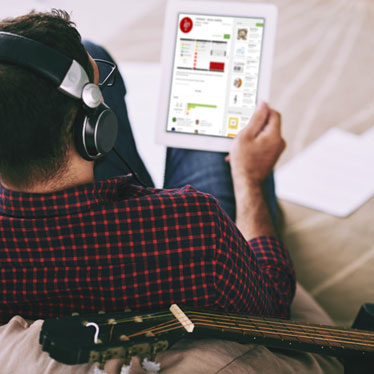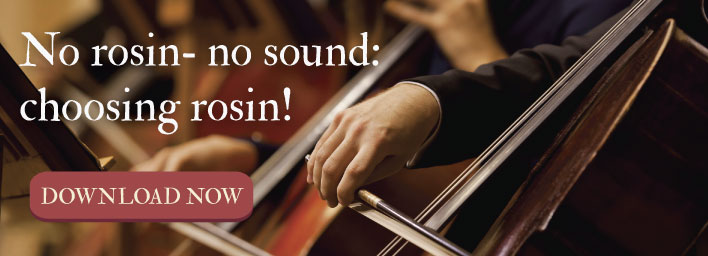2025 Best Apps And Games For Learning To Sight Read Music

Not long ago, sight reading practice for string players meant flipping through flashcards or digging through piles of sheet music. While those methods still have value, today’s students and teachers have powerful new tools right at their fingertips. A wide range of music apps now offer interactive, engaging ways to build sight reading skills, with instant feedback, customizable difficulty levels, and even game-like features to keep practice fun and effective. In this article, we’ll highlight some of the best apps available for string players of all levels, and explore how they can support stronger reading skills.
Why Sight Reading Matters
Strong sight reading skills is one of the most useful tools a string player can have. The ability to read music on the spot helps students stay on track in orchestra, pick up new pieces more quickly, and feel more confident in lessons, independent practice, auditions, and chamber music settings.
For teachers, strong sight reading skills mean more time spent on musical expression and technique, and less time learning notes and rhythms. It encourages musical independence and gives students the freedom to explore new repertoire on their own.
Like learning a new language, sight reading improves with regular exposure and practice. The more you do it, the more fluent you become. That’s why building it into daily practice pays off in a big way.
More Than Just Notes
Sight reading isn’t just about reading notes on a page, it’s a combination of several skills that come together to help you play music confidently and accurately. As you develop your sight reading abilities, it’s helpful to break things down into specific areas that need attention. Here are the key skills you’ll be working on as you improve your sight reading:
1. Note Reading
At its core, sight reading is about quickly identifying the notes on the staff and translating them to your instrument. This involves recognizing both pitch (which note to play) and placement (which string or finger to use). For string players, this also includes learning to read in different positions on the fingerboard.
2. Rhythm
Accurate rhythm is just as important as reading the notes correctly. Being able to look at a piece of music and instantly understand its rhythmic structure is a vital part of sight reading. This means recognizing time signatures, understanding different note values (like quarter notes, eighth notes, and rests), and maintaining a steady tempo, even when you’ve never played the piece before.
3. Sight Singing and Aural Skills
Sight reading isn’t only about playing an instrument; it’s also closely tied to your aural skills. The more you practice identifying intervals, chord progressions, and melodies by ear, the easier it will be to sight read. A strong ear helps you anticipate what the music should sound like, which makes it easier to catch mistakes and play in tune.
4. Articulation and Expression
Once you’re comfortable reading the notes and rhythms, the next step is adding musicality. Sight reading isn’t just about playing the notes correctly, but also about playing them with expression, dynamics, and phrasing. Recognizing markings like accents, slurs, or crescendos in real-time can make a big difference in how the music comes to life.
5. Composition and Music Structure
A deeper understanding of music theory can elevate your sight reading ability. Being able to recognize patterns, scales, key signatures, and harmonic structures as you read allows you to process the music more quickly. If you have a background in composition or music analysis, you’ll be able to anticipate musical turns and phrasing more easily.
Now, let’s dive into some of the best apps designed to help string students sharpen their sight reading skills. These apps cater to players of all levels, offering a range of features that focus on different aspects of sight reading. As an added bonus, many of these apps include customizable settings, allowing you to adjust key signatures, time signatures, and range to match each student’s current abilities.
🎵 Music Tutor
Cost: Free with optional in-app purchases
Best For: Ages 4 and up (beginner-advanced)
Devices: iOS, Android
Highlights:
- Quick drills for identifying notes in treble, bass, or alto clef
- Tracks speed and accuracy
- Customizable note range, clef, and accidentals
🎵 Sight Reading Trainer (by NoteVision)
Cost: Free with optional in-app purchases
Best For: Ages 4 and up (beginner-advanced)
Devices: iOS
Highlights:
- Progressive sight reading exercises
- Tracks accuracy and progress
- Customizable key/time signatures, note range, and tempo
🎵 Sight Reading Factory
Cost: Free
Best For: Ages 4 and up (beginner-advanced)
Devices: Web-based, iOS, Android (via browser)
Highlights:
- Infinite, randomly generated sight reading exercises
- Supports solo instruments, voice, and ensembles
- Detailed customization: clef, range, rhythms, keys, articulations, tempo, and more
🎵 Flashnote Derby
Cost: $4.99
Best For: Ages 4 and up (beginners)
Devices: iOS, Android
Highlights:
- Note reading drill meets horse racing game
- Clef and note range are adjustable
- Great for early music readers needing repetition in a playful format
🎵 Monster Musician
Cost: Free
Best For: Ages 4 and up (beginner-intermediate)
Devices: iOS
Highlights:
- Real-time pitch recognition from your instrument
- Fun, monster-themed interface encourages consistent practice
- Customizable range, clef, and tempo
🎵 Rhythm Swing
Cost: $3.99
Best For: Ages 4 and up (beginner-intermadiate)
Devices: iOS
Highlights:
- Rhythm-only app with a swing-themed tapping game
- Divided by rhythmic difficulty
- Teaches beat, subdivisions, and rests in a fun and entertaining way
🎵 Note Racer
Cost: Free with optional in-app purchases
Best For: Ages 4 and up (beginner-advanced)
Devices: iOS
Highlights:
- Notes scroll across the screen arcade-style
- Builds speed and fluency in note recognition
- Choose clef, note range, and speed
🎵 Chet: Ear Training
Cost: Free with optional in-app purchases
Best For: Ages 4 and up (beginner-advanced)
Devices: iOS
Highlights:
- Interval, chord, and scale ear training
- Sleek, gamified interface
- Adjustable difficulty and exercise types
🎵 Earpeggio
Cost: Free with optional in-app purchases
Best For: Ages 4 and up (beginner-advanced)
Devices: iOS, Android
Highlights:
- Comprehensive ear training with exercises in intervals, chords, scales, melodies, and rhythm
- Clear visuals and audio feedback
- Customizable difficulty levels and practice categories
Go ahead, pick an app and get started!

